Throughout the world, there are breathtaking landscapes that defy conventional scientific explanation. These natural wonders captivate our imagination and challenge our understanding of geological processes. From mysterious formations shrouded in local folklore to bizarre terrains that seem otherworldly, these landscapes invite us to question what we know about our planet. Here, we explore ten such places, each with its own allure and enigma, offering a glimpse into the power and mystery of nature’s artistry.
1. Sailing Stones of Racetrack Playa

In the remote Racetrack Playa of Death Valley, stones travel alone. These sailing stones leave tracks on the desert floor, puzzling scientists for decades. Despite extensive study, the exact mechanism remains elusive. Some attribute the phenomenon to a unique combination of wind and ice, yet no definitive answer satisfies all observations. Visitors are greeted by a vast, flat landscape, where these stones’ paths crisscross like an abstract artwork. The mystery deepens with each unanswered question. The playa offers a stunning yet eerie sight, reflecting nature’s capacity to astonish and baffle.
2. Fairy Circles of Namibia
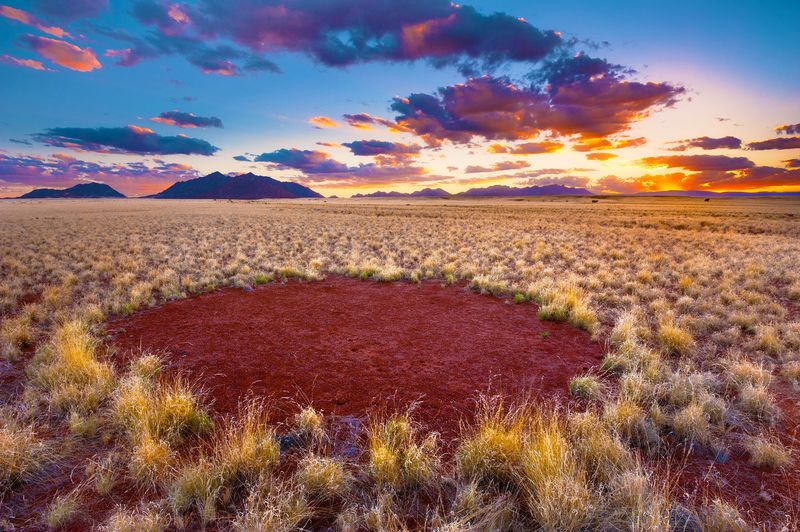
In Namibia, the desert floor is dotted with fairy circles — strange, round patches of bare soil surrounded by grass. The origin of these circles has sparked intense debate among scientists. Some theories suggest termite activity, while others propose self-organizing vegetation patterns. Despite numerous studies, no consensus has been reached. These circles vary in size and can stretch for miles, creating an enigmatic polka-dot landscape. Their regularity and formation remain a captivating mystery. To locals, they are footprints of the gods, adding a layer of myth to this scientific riddle.
3. Blood Falls of Antarctica

Blood Falls in Antarctica spews a startling, rusty-red liquid from the Taylor Glacier. This phenomenon owes its color to iron-rich water oxidizing upon contact with the air. However, the true enigma lies beneath the surface. The source of this iron-rich water remains a mystery. Scientists speculate about a subglacial lake sealed off for millions of years. This mysterious liquid, trapped in ancient ice, challenges our understanding of life in extreme conditions. Blood Falls stands as a testament to the unknown wonders lying beneath Earth’s icy frontier.
4. The Moeraki Boulders, New Zealand
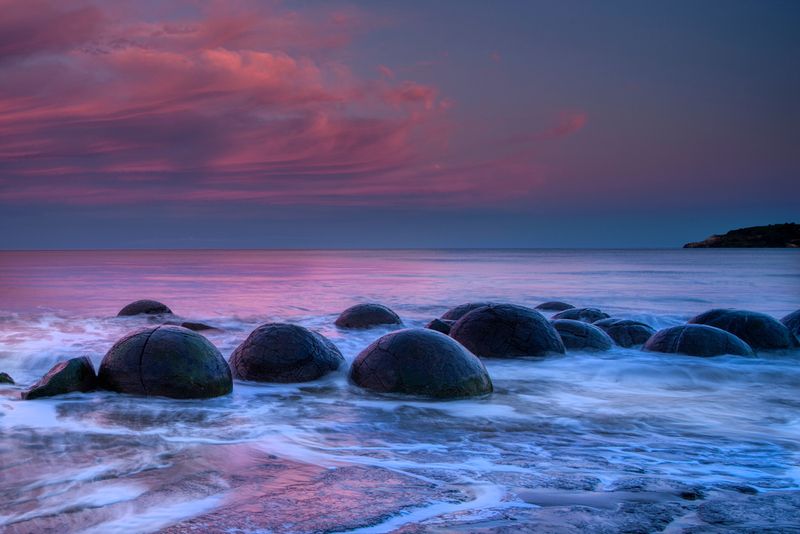
New Zealand’s Moeraki Boulders rest on the Koekohe Beach, appearing like massive marbles scattered by a playful giant. These perfectly spherical stones intrigue geologists and tourists alike. Formed over millions of years, their origins are attributed to calcite deposits around a central core. Yet, the precise conditions leading to their symmetry remain unexplained. Legends speak of these as remains of ancient eel baskets washed ashore. Each boulder, weathered and cracked, tells a silent story of geological time. Their presence adds an air of mystery to this serene coastline.
5. Stone Forest of Madagascar
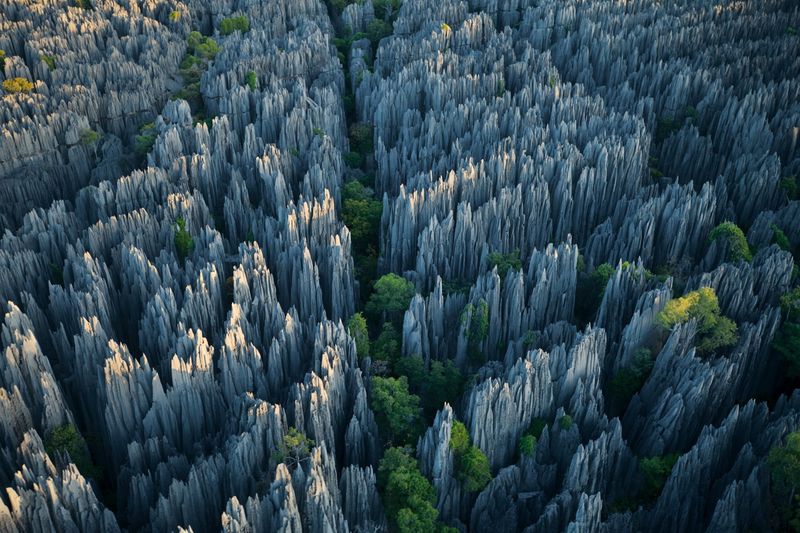
The Stone Forest, or Tsingy de Bemaraha, is a labyrinth of sharp limestone needles rising from the ground. Found in Madagascar, this karst landscape defies conventional erosion patterns. Scientists find the formation perplexing. The spires, some reaching over 70 meters, create a breathtaking, alien-like vista. While some theories suggest acidic rainfall as a sculptor, the forest’s sheer scale and complexity challenge understanding. It’s a place where nature’s artistry meets inscrutable geology. A visit here evokes awe, inviting contemplation of Earth’s untamed creativity.
6. The Devil’s Kettle, Minnesota

At Minnesota’s Judge C.R. Magney State Park, the Brule River splits at the Devil’s Kettle. One branch flows on, while the other vanishes into a deep hole, its destination unknown. Despite numerous attempts to trace the water, its exit point remains a secret. This oddity captivates visitors and hydrologists alike. The surrounding forest adds a mystical aura to this enigmatic waterfall. The mystery of the missing water continues to invite speculation and wonder. It stands as a testament to nature’s ability to keep secrets from even the most curious minds.
7. The Eye of the Sahara, Mauritania
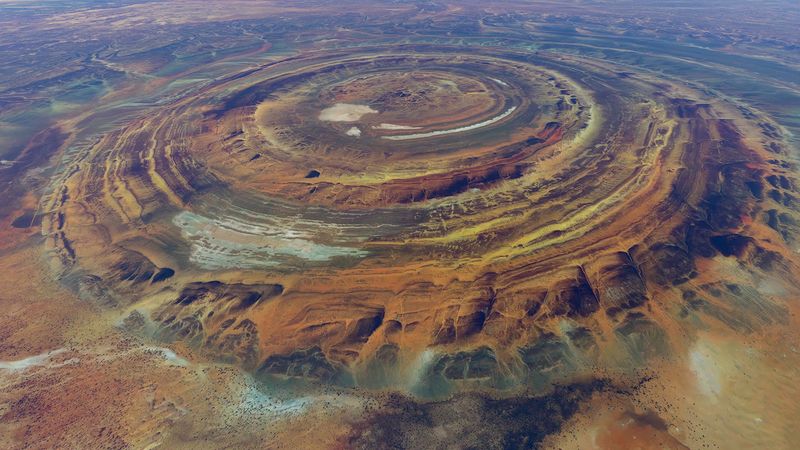
The Eye of the Sahara, or Richat Structure, is a striking circular formation in the Sahara Desert. Visible from space, it resembles a bullseye target. Its origin remains a topic of debate among scientists. Some suggest it was formed by a meteor impact, while others propose volcanic activity. Despite these theories, no definitive evidence confirms its creation process. The Eye’s concentric rings and sheer size spark curiosity and awe. This geological puzzle continues to intrigue researchers and adventurers alike, drawing them to its remote location.
8. The Door to Hell, Turkmenistan
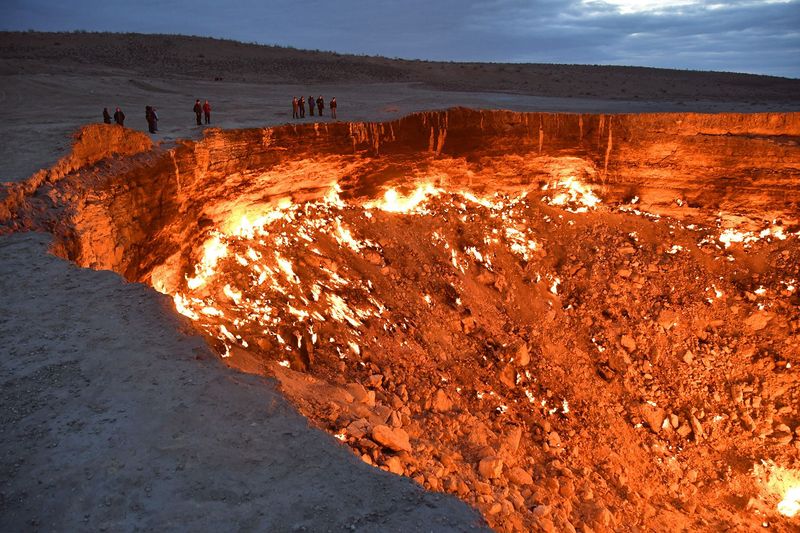
The Door to Hell in Turkmenistan is a fiery crater that has burned for decades. Originating from a Soviet drilling mishap, it was ignited to prevent methane spread but continues to burn. The ongoing combustion of gas beneath creates a spectacle of endless flames. This dramatic sight attracts both tourists and scientists. Despite its man-made origin, the perpetual fire and the crater’s resilience defy logic. Set in a barren desert, the blazing pit creates a surreal, otherworldly scene. It remains a paradox of human intervention and natural endurance.
9. The Hessdalen Lights, Norway

In Norway’s Hessdalen Valley, mysterious lights dance across the night sky. These lights, varying in color and intensity, elude scientific explanation. Observed since the 1930s, they continue to intrigue researchers. Hypotheses range from piezoelectric effects to combustion of dust particles, yet no theory fully explains their behavior. The lights’ unpredictable nature adds to their allure. Locals share tales of these spectral illuminations, adding folklore to science. The Hessdalen Lights represent a fascinating intersection of mystery and natural phenomena, captivating all who witness them.
10. Pamukkale Thermal Pools, Turkey
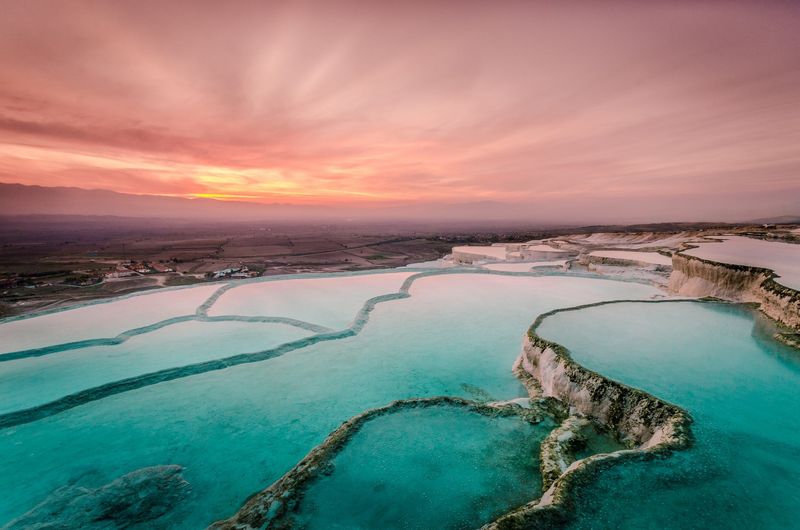
Pamukkale, meaning “cotton castle” in Turkish, is a natural wonder of dazzling white terraces. These terraces, made of travertine, are formed by hot springs depositing calcium carbonate. Despite being a well-understood process, the visual magnificence of Pamukkale defies expectation. The vibrant, turquoise pools cascade down the hillside, offering a surreal, dream-like vista. Tourists flock to bathe in the mineral-rich waters, believed to have healing properties. This UNESCO World Heritage site mesmerizes with its ethereal beauty, standing as a testament to nature’s capacity for exquisite artistry.

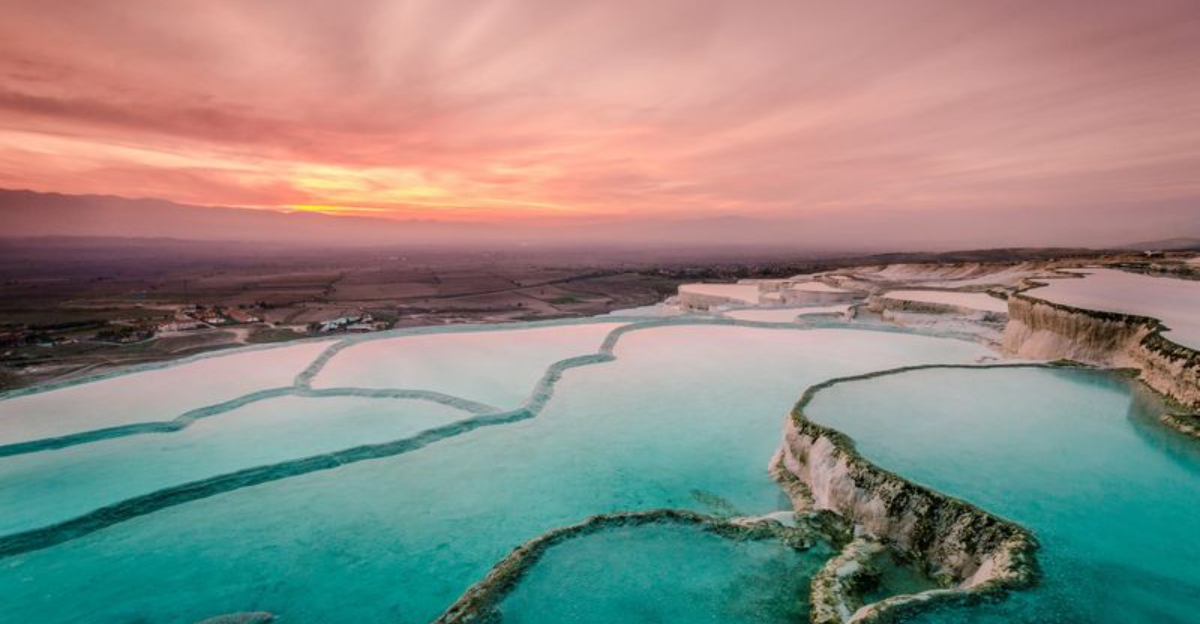
Leave a Reply